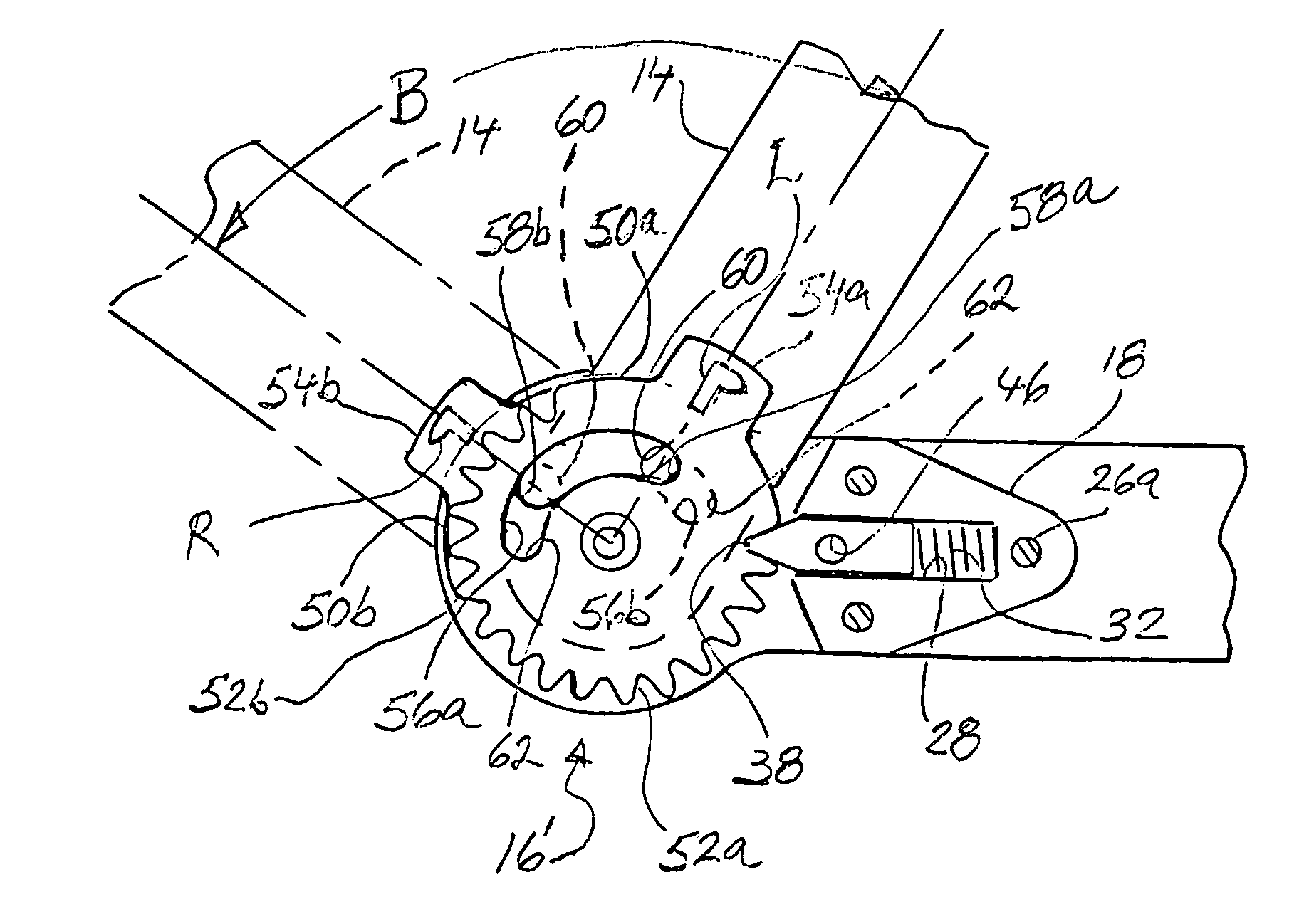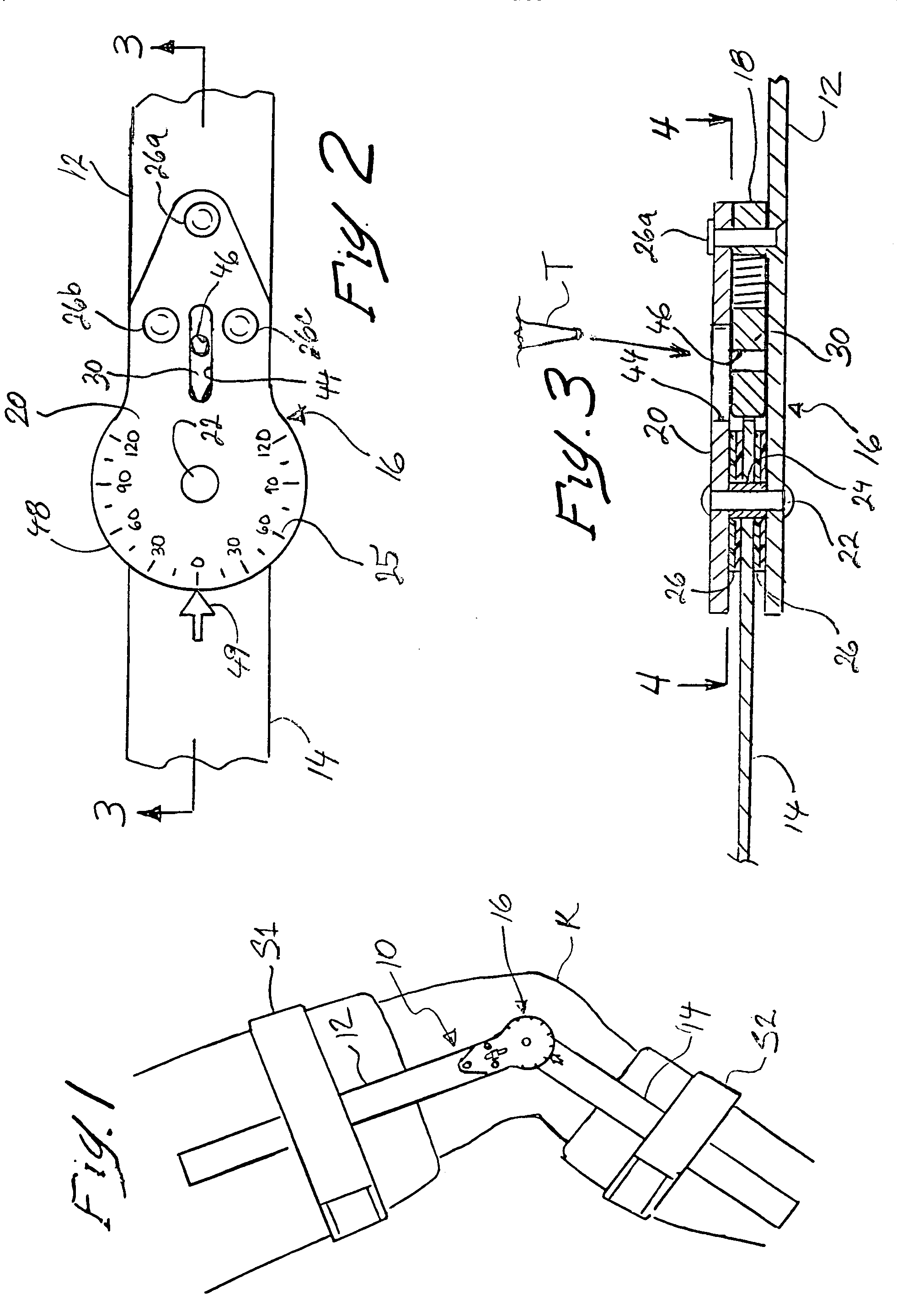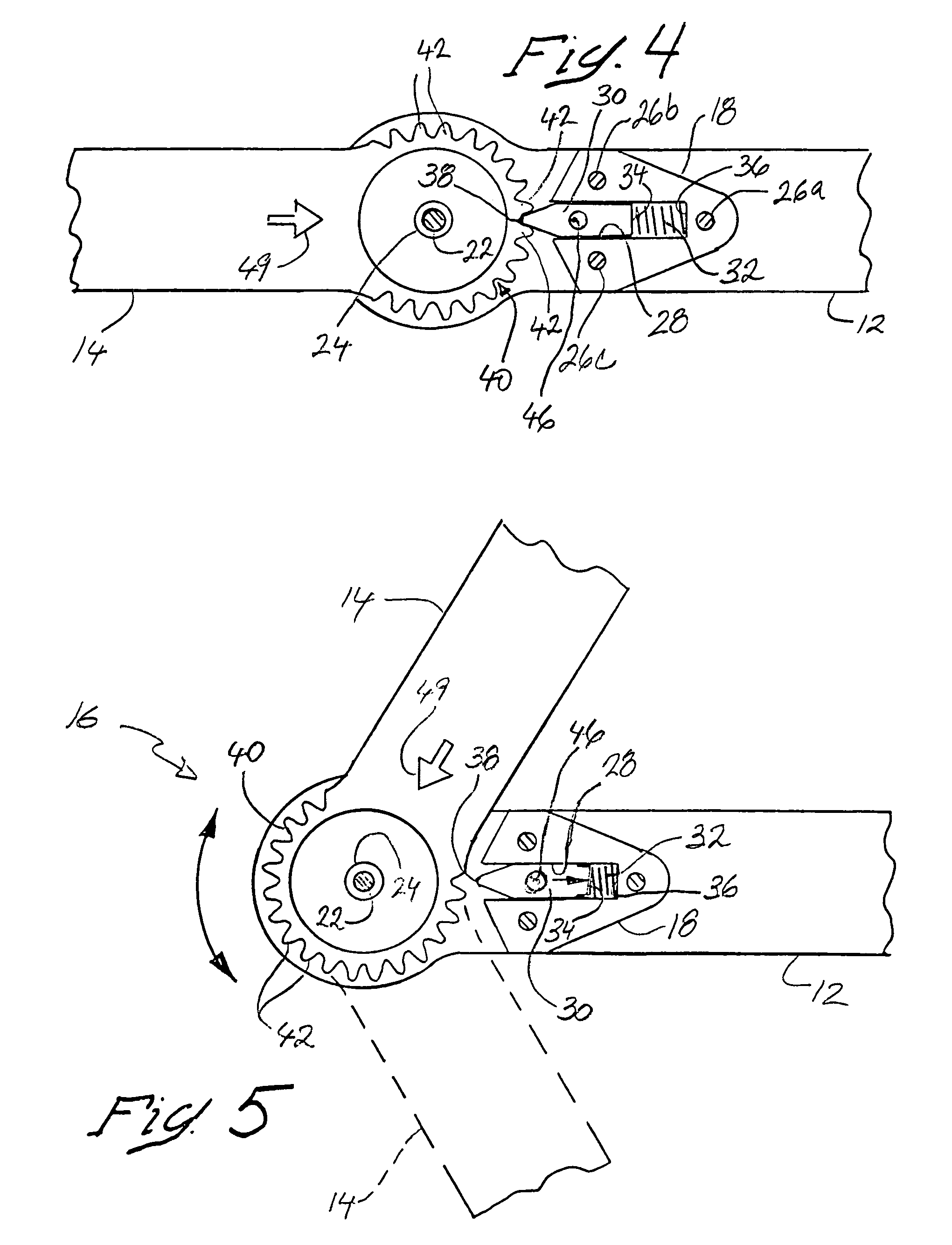Adjustable hinges for orthopedic splints
a technology of orthopedic splints and hinges, which is applied in the field of hinged orthopedic splints and braces, to achieve the effects of convenient application of splints, convenient adjustment, and convenient engagement and displacement of detents
- Summary
- Abstract
- Description
- Claims
- Application Information
AI Technical Summary
Benefits of technology
Problems solved by technology
Method used
Image
Examples
Embodiment Construction
[0025]With reference to the drawings wherein like elements are designated by like numerals, FIG. 1 depicts an orthopedic splint or knee brace 10 applied to the knee joint K of a patient. The brace includes an upper plate 12 and a lower plate 14 connected to each other for pivotal movement by a hinge 16. The upper plate is attached to the thigh of the patient's leg by an upper strap S1 and the lower plate is similarly attached to the leg below the knee by a lower strap S2 so that the hinge 16 lies adjacent to and pivots with bending of the knee. Typically, two similar knee braces 10 are applied to the knee joint of the patient, one brace on the outside of the leg, as shown in FIG. 1, and an opposite second brace (hidden in FIG. 1) on the inside of the leg. The two braces are generally parallel to each other and provide lateral support to the knee joint while allowing flexing of the knee joint in a plane parallel to the planes of movement of the brace hinge 16. In the course of rehabi...
PUM
 Login to View More
Login to View More Abstract
Description
Claims
Application Information
 Login to View More
Login to View More - R&D Engineer
- R&D Manager
- IP Professional
- Industry Leading Data Capabilities
- Powerful AI technology
- Patent DNA Extraction
Browse by: Latest US Patents, China's latest patents, Technical Efficacy Thesaurus, Application Domain, Technology Topic, Popular Technical Reports.
© 2024 PatSnap. All rights reserved.Legal|Privacy policy|Modern Slavery Act Transparency Statement|Sitemap|About US| Contact US: help@patsnap.com










